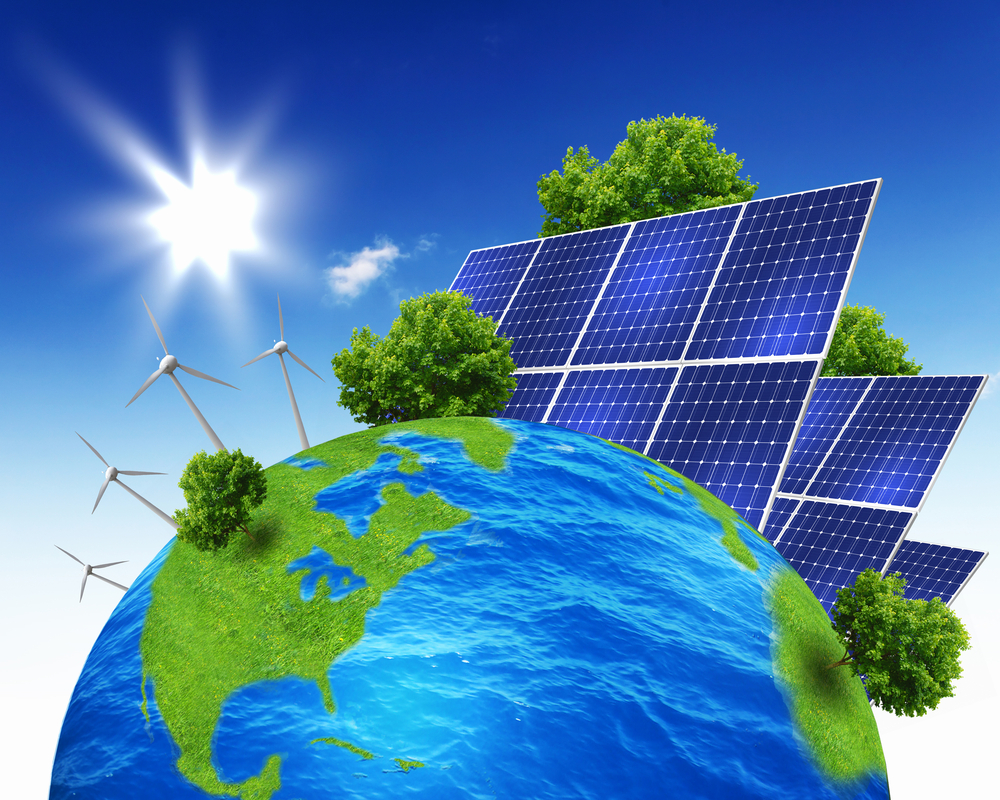Which countries have the most solar energy per continent?
Making electricity on-site from renewable energy sources and other environmentally friendly energy sources helps minimize greenhouse gas emissions. Solar energy technology includes rooftop solar panels and solar water heating.
Which countries have the most solar energy per continent? is the topic of this research let’s have a look
1.China, Asia 392 (GW)
China installed more than 48 GW of photovoltaic (PV) capacity in 2020, bringing its total installed capacity to 253,6 GW, according to the National Energy Administration of China. With 33% of all global installations coming from the Chinese market, China has enough PV capacity to maintain its market-leading position. It is good that China, which has the largest population and carbon footprint, is firmly committed to renewable energy. The United States and China reaffirmed their commitment to cooperating with other parties to strengthen the implementation of the Paris Agreement and welcomed the tremendous efforts being made globally to address the climate catastrophe in the U.S.-China Joint Glasgow Declaration in 2021. Japan was fourth in the world for solar power capacity a few years ago and comes 2nd in Asia after China.
2.California, The United States 121 (GW)
Of all the states in the United States, California has the highest installed solar photovoltaic generating capacity. The Golden State had a total solar power capacity of over 37 gigawatts as of Q2 2022. By increasing the number of solar installations in the utility and residential markets, the United States has maintained its position as a global leader in solar energy. Significant government incentives granted to the residential sector, a quickly expanding market segment, are responsible for a large portion of the rise.
The residential market and the utility industry both saw growth in 2022 over their respective 2019 levels of 15% and 37%. With 19,7 GW in total new installed capacity for 2020, the United States now has 121 GW in installed capacity overall. The output in the United States is anticipated to increase in the next years as solar energy costs decrease and become more cost-competitive with nonrenewable resources.US solar installations are expected to reach 419 GW over the next decade as the nation ramps up its clean energy initiatives and aims to completely decarbonize its power grid by 2035.
3.Germany, European Union 66.5 (GW)
Germany is Europe’s leader in terms of renewable energy. The country had a 66.5 GW solar capacity as of 2021. In the first half of 2022, Germany boosted its capacity by more over 3.8 GW. Solar energy made up 10% of the nation’s electrical usage in 2021. Tension has grown between Russia and numerous European countries as a result of the Ukraine war. Gas shortage is one of the effects of this conflict that Germany is currently experiencing. The German government is working to implement legislation and increase the capacity for renewable energy in order to handle this energy issue.
The second-largest producer of solar energy is the European Union, an economic and political union of 27 nations. The number of European Union members holding solar energy auctions has grown, successfully bringing down prices. With 19,8 GW, the European Union saw an increase for the third consecutive year, getting closer to the 23,2 GW recorded in 2011. The main markets were Germany, the Netherlands, and Spain, followed by Poland, France, and Belgium.
In 2022, the European Union’s installed PV power capacity exceeded 138 GW. Residential and commercial rooftop installations made up nearly 55%. Before the trend changed in 2018, the PV market in the European Union had been falling for six years.
4.Queensland, Australia: 16.3 GW
Australian solar PV installations suddenly increased in 2018, significantly transforming the nation from a relative behind to a strong leader by mid-2022. Australia had the second-highest per capita solar capacity with 637 watts at the end of 2022 and 16.3 GW of installed photovoltaic capacity. Between 2009 and 2011, Australia’s installed PV capacity expanded tenfold, and between 2011 and 2016, it quadrupled. The 1 MW Uterne Solar Power Station, the first PV power plant built for commercial use, was inaugurated in 2011. Australia now uses very little solar energy; in fact, it only makes up about 0.1% of the country’s total primary energy consumption.
5.South Africa, Africa 10GW
Despite a significant increase in the last two decades, Africa’s investment in renewable energy is still very modest, especially when compared to other parts of the world. Hydro, solar, wind, geothermal, and bioenergy resources are plentiful throughout the continent. As of 2022, South Africa had Africa’s highest solar energy capacity, with over six gigawatts. Approximately 54.6 percent of Africa’s annual solar energy capacity was represented by this. Egypt had the second-largest capacity at 1.7 gigawatts, Morocco came next with a solar energy capacity of 774 megawatts.
What Does Solar Power Have to Do with GW and PV?
An electrical power measurement unit is the gigawatt (GW). In order to convert sunlight into electrical energy, photovoltaic (PV) technology uses PV materials and equipment. A PV cell is a single PV device, and a single PV cell may generate between 1 and 2 watts of power.
What Do the International Energy Agency’s Photovoltaic Power Systems Program Mean?
The International Energy Agency, established in 1974, is dedicated to advancing shared research and the application of particular energy technologies. It focuses on the future of energy security and sustainability through global collaboration made up of experts from government, academia, and industry. The IEA Photovoltaic Power Systems Program was established in 1993 with the goal of “improving the international collaborative efforts which facilitate the role of photovoltaic solar energy as a cornerstone in the transition to sustainable energy systems.”
Read about The Top Ten Countries Using Solar Power in 2022
The use of renewable energy has increased globally. In addition to being more environmentally friendly, clean energy is also more affordable thanks to advancements in renewable energy. And the world must first pay attention to this new, adaptive thing.
Visit our home page to read more and, subscribe to our channel for more excellent explanation videos.




The point of view of your article has taught me a lot, and I already know how to improve the paper on gate.oi, thank you. https://www.gate.io/ja/signup/XwNAU
I very delighted to find this internet site on bing, just what I was searching for as well saved to fav
Can you be more specific about the content of your article? After reading it, I still have some doubts. Hope you can help me.
Наша группа опытных исполнителей завершена выдвинуть вам новаторские системы утепления, которые не только ассигнуруют надежную защиту от мороза, но и дарят вашему зданию оригинальный вид.
Мы занимаемся с современными строительными материалами, сертифицируя долгий период использования и превосходные выходы. Утепление наружных поверхностей – это не только экономия на отоплении, но и заботливость о окружающей природе. Энергосберегающие подходы, которые мы применяем, способствуют не только своему, но и поддержанию природной среды.
Самое важное: Утепление фасада цена за 1м2 у нас стартует всего от 1250 рублей за м²! Это доступное решение, которое превратит ваш помещение в настоящий комфортный местечко с минимальными затратами.
Наши труды – это не лишь изолирование, это составление площади, в котором каждый элемент выражает ваш свой стиль. Мы возьмем во внимание все все ваши запросы, чтобы воплотить ваш дом еще более удобным и привлекательным.
Подробнее на http://ppu-prof.ru
Не откладывайте заботу о своем помещении на потом! Обращайтесь к исполнителям, и мы сделаем ваш дворец не только тепличным, но и изысканнее. Заинтересовались? Подробнее о наших делах вы можете узнать на интернет-портале. Добро пожаловать в пространство гармонии и качественного исполнения.
Good day! I know this is somewhat off topic but I was wondering if you knew where I could locate a captcha plugin for my comment form? I’m using the same blog platform as yours and I’m having problems finding one? Thanks a lot!
Your article helped me a lot, is there any more related content? Thanks! https://www.binance.com/register?ref=P9L9FQKY
Thanks for sharing. I read many of your blog posts, cool, your blog is very good.
Its superb as your other blog posts : D, thanks for posting.
Thanks for sharing. I read many of your blog posts, cool, your blog is very good.